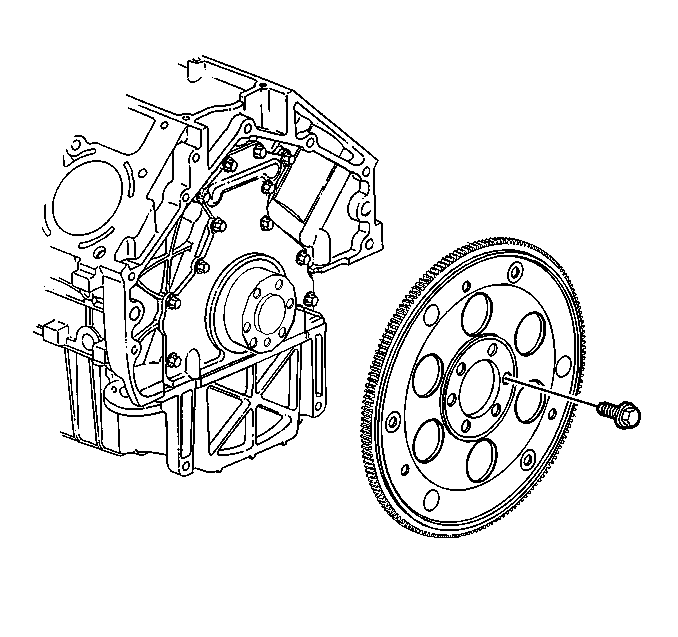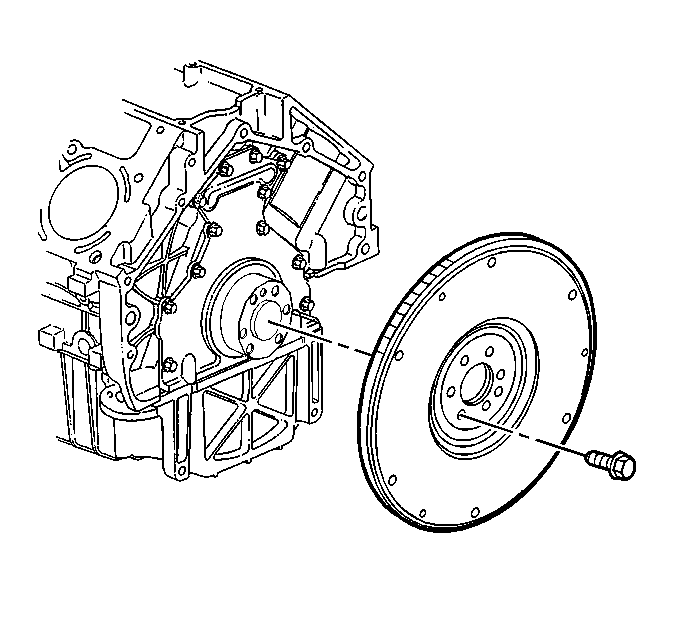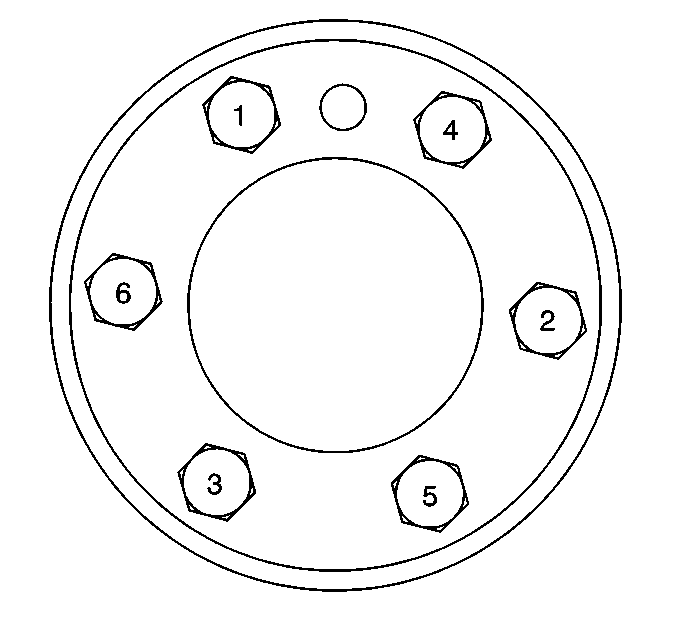Removal Procedure
- Remove the automatic transmission, if applicable. Refer to Transmission Replacement in Automatic Transmission - 4L60-E/4L65-E.
- Remove the manual transmission, if applicable. Refer to Transmission Replacement in Manual Transmission - Tremec 6-Speed.
- Mark or scribe the end of the crankshaft and the flywheel.
- Remove the engine flywheel bolts.
- Remove the automatic transmission flywheel, if applicable.
- Remove the manual transmission flywheel, if applicable.
- If replacing the flywheel, remove any balance weights, if applicable.

Important: Note the position and direction of the engine flywheel before removal. The flywheel does not use a locating pin for alignment. Mark or scribe the end of the crankshaft and the flywheel before component removal. The engine flywheel will not initially seat against the crankshaft flange, but will be pulled onto the crankshaft by the engine flywheel bolts. This procedure requires a three stage tightening process.
Important: If replacing a flywheel, note the location of any existing balance weight pins relative to the position of the flywheel locating hole. If replacing the flywheel and balance weight pins are installed in the original flywheel, use a suitable pin punch and remove the pins from the old flywheel and then reinstall them in the same relative location in the replacement part. Install the balance weight pins either flush or below flush with the machined surface of the flywheel.

Installation Procedure
- If replacing the flywheel, Install any balance weights, if applicable.
- Install the manual transmission flywheel to the crankshaft, if applicable.
- Install the automatic transmission flywheel to the crankshaft, if applicable.
- Apply threadlock GM U.S. P/N 12345382, Canada P/N 10953489, or equivalent to the threads of the flywheel bolts.
- Install the flywheel bolts.
- Tighten the engine flywheel bolts a first pass in sequence to 20 N·m (15 lb ft).
- Tighten the engine flywheel bolts a second pass in sequence to 50 N·m (37 lb ft).
- Tighten the engine flywheel bolts a final pass in sequence to 100 N·m (74 lb ft).
- Install the manual transmission, if applicable. Refer to Transmission Replacement in Manual Transmission - Tremec 6-Speed.
- Install the automatic transmission, if applicable. Refer to Transmission Replacement in Automatic Transmission - 4L60-E/4L65-E.

Important: If replacing a flywheel, note the location of any existing balance weight pins relative to the position of the flywheel locating hole. If replacing the flywheel and balance weight pins are installed in the original flywheel, use a suitable pin punch and remove the pins from the old flywheel and then reinstall them in the same relative location in the replacement part. Install the balance weight pins either flush or below flush with the machined surface of the flywheel.


Notice: Use the correct fastener in the correct location. Replacement fasteners must be the correct part number for that application. Fasteners requiring replacement or fasteners requiring the use of thread locking compound or sealant are identified in the service procedure. Do not use paints, lubricants, or corrosion inhibitors on fasteners or fastener joint surfaces unless specified. These coatings affect fastener torque and joint clamping force and may damage the fastener. Use the correct tightening sequence and specifications when installing fasteners in order to avoid damage to parts and systems.
Tighten
